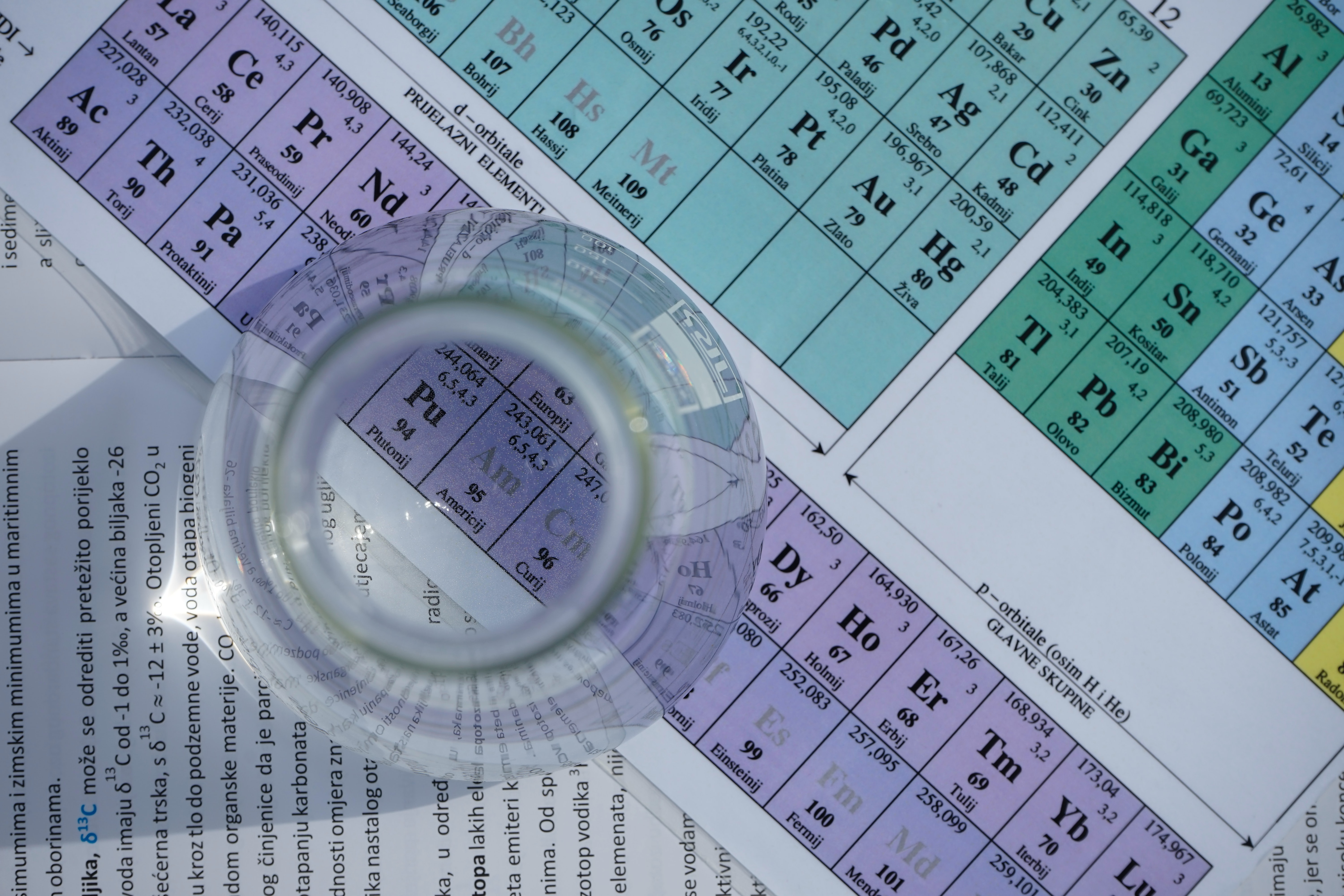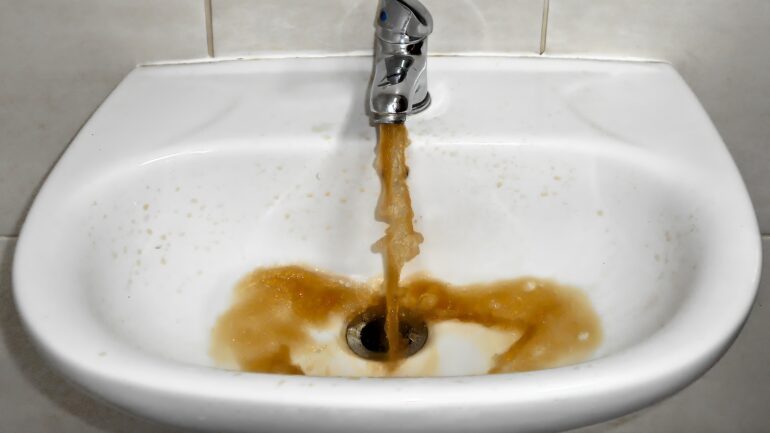By Frank Ramos, President & Founder, and April Day, Publishing Director for Save The Water™ | October 1, 2018
The Current Regulation of Water Sets Limits Individually for Toxic Chemicals
From a chemistry standpoint, the human body is a system that produces small amounts of chemicals intended to generate specific reactions that regulate all bodily functions. For example, endocrine glands inject chemicals directly into the blood. The endocrine system and its chemicals, called hormones, help regulate many processes such as reproductive cycles and digestive processes. In short, the body depends on chemicals to be healthy. But toxic chemicals in water threaten our health.
Today, the U.S. depends on the Safe Drinking Water Act (SDWA) to regulate toxic chemicals in water. Basically, the SDWA limits the amount of individual chemicals by setting a maximum contaminant level (MCL). For example, the Act sets the limit for arsenic at 10 parts per billion (ppb), lead at 15 ppb, and cyanide at 2 parts per million (ppm). Although the exact limit for each chemical may seem important, it is not.
What is important is the number of chemicals at various concentrations that make up a mixture. When mixed, chemicals react with each other. For example, add a sodium ion to a chlorine ion and you get table salt. Which is to say, one single chemical at 10 ppb may not have adverse health effects, but thousands of different chemicals in a mixture, at 10 ppb each, pose a serious threat. For example, studies have shown the synergistic effect of toxic chemicals.1
Also today, the Chemical Abstract Service has registered into their chemical database 143 million chemicals since 1965. The database includes naturally occurring and man-made chemicals. This begs the question: in what quantities are these 143 million chemicals found?
They range from a couple vials in a laboratory to being manufactured in the hundreds of millions of pounds per year for commercial use. Many are probably in your drinking water, at some level.
When Chemicals React They Have a Different Toxicity
Studies have shown that when we combine toxic chemicals, the toxicity of the mixture is multiplied by 10, 100, or even 1,000 times the toxicity of the individual chemicals. In other words, the resulting toxicity is not simply the summation of the toxicity of the chemicals, such as 10+10+10=30. Instead, this synergistic effect means any number of outcomes, such as 10*10*10=1000. Multiply this reasoning out to consider the thousands of chemicals in the mixture. These mixtures can be considered a poisoned time bomb for humanity. For example, a review by Le Magueresse-Battistoni published in the World Journal of Biological Chemistry explained, “collectively, these studies constitute proof-of-concept that low doses for humans are not harmless when in a mixture.”1
Consider these two facts. First, all things, including consumer products, are made of chemicals. Second, water is the universal solvent, meaning everything that can dissolve will dissolve in water. In conclusion, it is no wonder that we find chemicals from consumer products in our water.
Toxic Chemicals Are Linked to Health Problems, Including Cancer
In 2014, a study by the Silent Spring Institute showed that 102 chemicals found in consumer products cause breast cancer. As Silent Spring put it, “Every woman in America has been exposed to chemicals that are linked to breast cancer. Yet little is being done to tackle this problem. Data from the CDC shows that these chemicals are routinely found in Americans’ blood, urine and even breast milk.”2
Additionally, we have learned that pharmaceuticals have found their way into our drinking water. Studies by the Environmental Working Group found that prescription and over-the-counter drugs are common in 90% of U.S. water supplies. And there are several types of drugs. Antibiotics, antidepressants, birth control, and painkillers were among the most prominent. These drugs pass right through all municipal drinking water treatment systems and into our bodies.
When the Environmental Protection Agency (EPA) reviewed the Environmental Working Group study, the agency responded that the amounts of these drugs were small and below the dosage level. Therefore, they explained, these drugs posed no threat. We disagree because small amounts of chemicals can interfere with how the human body functions.
The Toxic Substances Control Act (TSCA)
In addition to the SDWA, the U.S. regulates chemicals through the Toxic Substances Control Act (TSCA). The name implies that this law controls toxic substances in our foods and consumer products. In reality, it doesn’t.
The Toxic Substances Control Act suffers from two major flaws:
- Companies may use chemicals prior to testing the possible health risks if the chemicals were grandfathered in (of which there were about 62,000, and with a conservative estimate, there may be 7,500 that would be considered “high priority” or of risk to human health under the Lautenberg amendments of 2016).
- The EPA’s powers to remove a chemical already in the marketplace are limited.
For example, in 2010, public outcry for the removal of bisphenol A, better known as BPA, forced manufacturers to remove the chemical from many consumer products such as baby products, cookware, and can liners. Note that public outcry removed BPA and not government intervention.
Is this a win? No. The manufacturers turned to their list of pre-approved chemicals and found bisphenol-S (BPS) as a substitute, which is even worse than BPA.3
This real-life scenario highlights two problems:
- The immediate danger that BPS poses to human health
- The holes in regulations for chemical compounds that allow toxic chemicals in products, including BPA free baby bottles4
How Big is the Problem?
How big is the problem of how the U.S. regulates toxic chemicals—ones that cause long-term and sometimes fatal health problems? Significantly, when Congress passed the TSCA in 1976, there were already 62,000 chemicals on the EPA’s list that were approved to be used in foods and consumer products without any toxicity tests. The law allowed them to be used without any further investigation. Since 1976, over 22,000 chemicals have been added to the EPA’s inventory of chemicals used in production, yet only about 200 have been fully assessed.
The time and resources needed to scientifically investigate a chemical and deem it “an unreasonable risk” to public health is very costly and time-consuming. Since manufacturers have been able to use chemicals prior to testing before the 2016 TSCA amendments, the law has been highly ineffective.
Current Regulations Are Not Enough to Protect Us
With a budget of over $8 Billion U.S. dollars and over 15,000 employees, the EPA regulates 80 chemicals in drinking water through the Safe Drinking Water Act. Their mission is “to protect human health and the environment.” But the laws bind the agency in a lot of red tape.
During the past 40 years, the EPA has tested less than 200 of the more than 84,000 chemicals with blanket approval to be used in foods and consumer products without prior health effect or toxicity studies. Compare that number with the suspected 80,000 chemicals in our drinking water with a possible number of combinations of 1.06 x 1086,000. How is regulating only 80 chemicals protecting our health?
At the rate of assessing 200 chemicals every 40 years, it will take the EPA 16,800 years to assess the 84,000 chemicals pending to be tested today. This assumes that no new chemicals will be added to the list. As you can see, the current regulations don’t protect us.
You Can Change This
Without a doubt, all is not lost. Save the Water™ believes we should not be drinking any amount of birth control, poison, or any other chemical on a regular basis, even in small amounts. We may not see any visible symptoms or effects now, but what about future generations? They are at their most vulnerable now and would be drinking this toxic cocktail for a lifetime. We can’t wait to find out what will happen to them. If we do, it will be too late.
Here are three things that you can do now:
- Learn more about health, water, and toxic chemicals. Follow Save the WaterTM.
- Support science. We need science-based solutions from laboratories. Consider donating here.
- Participate in efforts to change these regulations or manufacturers’ behaviors. We, the consumers, must tell manufacturers to make safe products.
Like BPA, we must defeat BPS and all toxic chemicals, individually and in small amounts mixed together in a toxic soup.
References
- Le Magueresse-Battistoni B. Labaronne E. Vidal H. Naville D. Endocrine disrupting chemicals in mixture and obesity, diabetes and related metabolic disorders. World Journal of Biological Chemistry. [Online] 2017, 8(2), 108–119.
- Lindsay Dahl. May 22, 2014. New study finds 102 common chemicals linked to breast cancer.“ Safer Chemicals, Healthy Families. https://saferchemicals.org/2014/05/22/new-study-finds-102-common-chemicals-linked-to-breast-cancer/
- Allison Eck. February 27, 2015. “BPS, A Common BPA Substitute, May Cause Heart Arrhythmia.” PBS: Nova Next. www.pbs.org/wgbh/nova/next/body/bps-a-common-bpa-substitute-may-cause-heart-arrhythmia/
- Sandra Gordon. May 3, 2018. “Baby bottles: Which is best?” baby products mom. https://www.babyproductsmom.com/2018/05/baby-bottles-ea-free-new-bpa-free/





